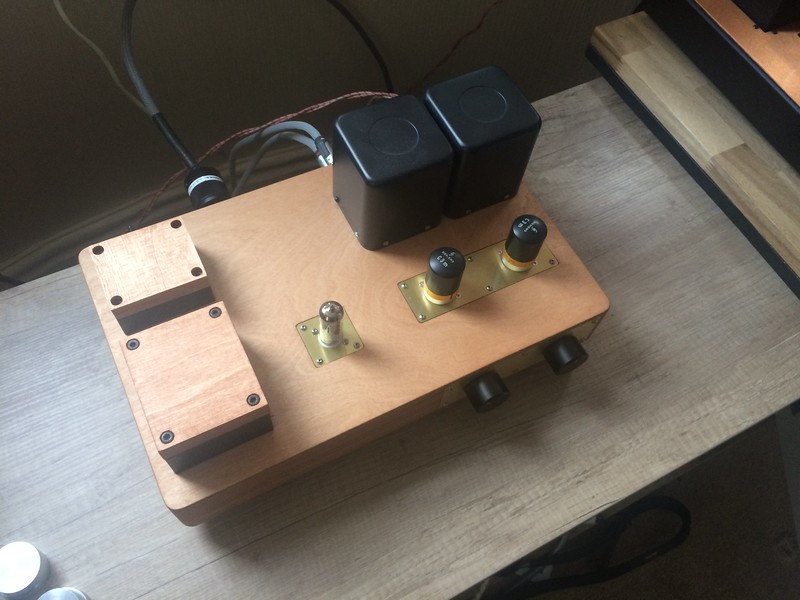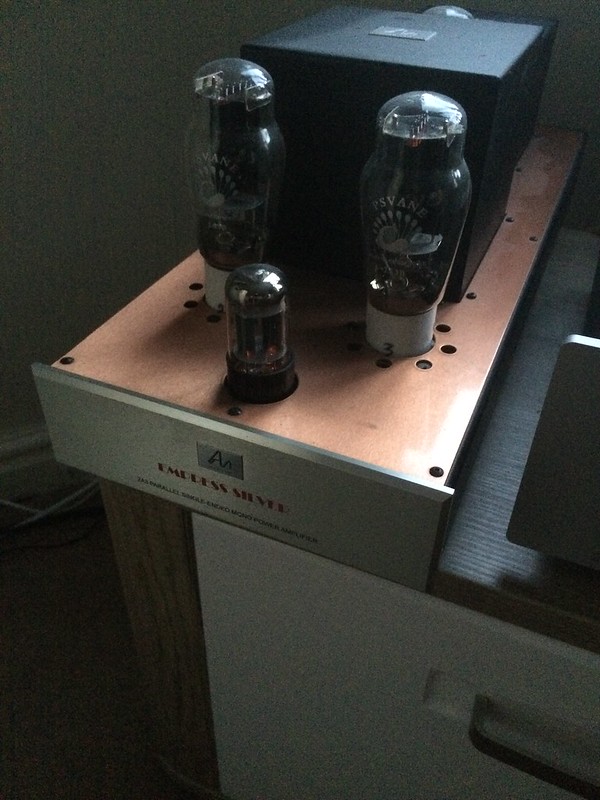This is very subjective but I hear a "big" sound as extending radially from the middle of the speaker. I think of a full and enveloping and complex sound as being a "big" sound.
I think of "scale and grandeur" in terms of height, in that the sonic experience is a facsimile of the physical height of a concert hall.
"Scale and grandeur" is a not terribly clear and specific expression LL21 and I use to describe what we hear from tall speakers like Genesis Prime and Rockport Arrakis.
Jimford's Tannoy Westminsters make a "big" sound, but I did not hear the height that I hear from very tall speakers.
In retrospect maybe I should have used only the terms "big" and "tall" (or "height"), as I suppose "scale and grandeur" really can come from a "big" sound or a "tall" sound, or both. Let's drop "grandeur" as it really does not add anything...
...Big and tall are adjectives. Is the sound "big" as in real life? Is the sound as "tall" as we experience in a concert hall?
Scale, in this context, is a verb as in "to scale up." For example, does the stereo system's sound scale up realistically in height and width from a solo vocalist to a symphony orchestra stage?
I do not have Ron's experience listening to multiple SOTA systems ,nor Kedar's in traveling to hear [many] big horns and panels. All I can say from my limited experience over the years from some of the following is that...
- Genesis 1s
- Cessaro Betas + Sub
- Cessaro Liszt
- Rockport Arrakis
- Wilson X1, X2, XLF
- Focal Grande Utopia
________________________
- Audio Note AN-E Speakers
- Focal Utopia Stella
- Magico Q5, SF Strad, Hansen Prince
- Apogee Stages, Quad 2912
- Martin Logan CLX + Subs
________________________
- Plenty smaller
________________________
...I understand what Ron is saying.
There IS something about scale that comes from the ability for the speaker to handle both complexity, volume and pure unadulterated movement of AIR in an effortless manner. But is ALSO seems in my limited experience to be correlated with bigger/taller speakers. Now of course, that COULD be because the taller speakers just also happened to be bigger, have more cone/panel surface area and therefore more 'air pushing power'.
But taking the Rockport Altairs vs the Arrakis for example, the Altairs were amazingly good speakers...but in comparison with the Arrakis...all i can say is the Altair scale felt intuitively smaller than the big Wilsons...but the Arrakis made the big Wilsons feel like somewhere between and Alexia and a Maxx. And having asked...
dealers and distributors were dead certain no amount of sub augmentation would enable the Altairs to match the scale of the Arrakis. The height, movement of air in the mids/treble...something all seemed to contribute to something that was quantums more than 2x Altair.
The Arrakis made the XLF feel like an Alexia/Maxx..but the big Genesis 1 made the Arrakis feel like an XLF.
How do I describe this scale (or perhaps what I am looking for in scale)?
1. The physical 'believeable' bounds of the soundstage push much further back, above, around you in a way that I have never experienced with smaller speakers or shorter speakers...but more importantly...
2. ...MORE importantly,
the instrument POWER is closer and closer to live. When we played Vivaldi La Stravaganza on the Genesis 1s, I have never heard before (nor since) the sense of 10-12 or so life-sized musicians scaled about 8 feet in front of me with an effortless sense of power not entirely different from listening in Wigmore. Normally, you get the massed strings laid out in positions across the room, some of the power, but not where it was effortlessly individual musicians playing life-sized instruments adjacent to each other. Crazy. Again,
imagine big Wilsons suddenly being dwarfed into Sashas by comparison...and simply NOT being able to handle that much string power and resolve it all so well as to be able to break it back down into individual players.
That was at Audiocrack's place, and that is a reference experience now in my "visual memory" of identifying musicians the system was playing back.
3.
The ability for the BASS of the room to pulverize effortlessly (Arrakis) and with completely perfect pitch was astounding and again...enabled me to listen to Kurt Cobain (Nirvana Unplugged) in a way that made the big Wilsons seem about 65% of the Arrakis' sense of power, drum kick, movement of air that you get when standing near a live band. When I used to stand next to the drum kit during rehearsals, the chest punch was fun, never made me flinch from distortion...and the Arrakis delivered that better than anything i have heard before. The opening single string NOTE from Norah Jones Feels Like Home (1st Track) had a power i have NEVER replicated on any big Wilson, big Focal, or ML before. And I chalk that up to the air power of the speaker...its ability to move air at all levels of the room, top and bottom. Yes, having 4 Siefried II monos helped without doubt when driving the Arrakis...but i still intuitively felt that having heard major power driving other big speakers...it is still about the massive air movement.
And I know there is still a long way to go...see below.
4.
The ability for the subterranean 'presence of the symphony hall' which IS often the domain of great subs (where by switching it off...the palpable sense of the symphony hall volume instantly collapses to whatever the main speakers themselves are producing...is also something where I only found this presence in the really big speakers...and in more than one instance with big speakers supported by well set up subs
5.
The ability during concert recordings to give you a sense of 'being there' in terms of power and scale...that is something I have again only found in the domain of the really big speakers...
Having understood
Dan D'Agostino once drove his Wilson X1s with SIX Krell Master reference Subs (dual 15" subs weighing 400lbs each)...I am told by someone who heard it that the movement of air produced a sense of scale, realism and power (not necessarily loud) that was reveletory.
I also know from
Arnie who uses the Arrakis...that adding 6 REL Reference Subs (2 towers of 3 each)...they have once again enabled his system to SCALE in a way that (even I knew) the Arrakis could not do on its own. (I did remark that no matter what...i would STILL like to see the Arrakis with great subs after auditioning them in Hong Kong years ago. I am glad now that Arnie believes he has proven that observation with his own system.)
I suspect the big horns can also do this...though I did not sense the same scale from the 2 mid-sized ones i heard which we were physically still quite large (7 feet tall?)...and so
the problem I am afraid to find out is how big horns need to be in comparison to their cone and panel+cone counterparts to achieve this level of scale. Even the mid-sized horns like the Cessaro Liszt take up a lot of volumetric space (7 feet tall). The Cessaro Beethoven is the size of a small piano for each channel. The Living Voice 4-box is also a lot of square footage...each sub is nearly 4 feet deep and 2+ feet wide and (i think) about 3 feet tall. The main channels are the same but not so deep.







 Untitled
Untitled Untitled
Untitled Untitled
Untitled Untitled
Untitled